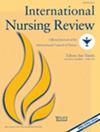Assessing patient safety culture in nursing practice in Kazakhstani healthcare institutions: A cross-sectional study
Abstract
Aim
To assess the current patient safety culture in nursing practice within Kazakhstani healthcare institutions accredited by the Joint Commission International standards.
Background
Studies on patient safety culture in nursing are scarce in regions like Kazakhstan, with most research focused on developed countries, leaving Central Asia with limited context-specific data.
Methods
A cross-sectional study using the Hospital Survey on Patient Safety Culture 2.0 collected data from 319 nurses, applying the Safety Culture Framework to assess and improve healthcare safety culture.
Results
The average score for ‘overall patient safety grade’ was 73.5, with most nurses rating their workplace as very good/excellent or good. Communication about error received the highest positive scores, while reporting patient safety events had the lowest. Teamwork and organizational learning-continuous improvement were identified as key strengths. Nearly half of the respondents had not reported any patient safety incidents in the past 12 months.
Conclusions
Nurses in Kazakhstan have a positive attitude toward patient safety culture and confidence in workplace safety. However, there is a need for greater focus on non-punitive responses to errors and staffing. The impact of accreditation on patient safety culture remains unclear, warranting further research.
Implications for nursing and health policy
Insights from this study can guide the development of patient safety protocols and training programmes. Addressing gaps will help stakeholders strengthen patient safety culture, ultimately improving patient care quality and healthcare outcomes.

 求助内容:
求助内容: 应助结果提醒方式:
应助结果提醒方式:


